You’ve likely heard of the term “FOMO,” or fear of missing out. And we’ve definitely all experienced it at some point or another ...
But it doesn’t just apply to a party you can’t go to or a travel opportunity you can’t take time off for – entrepreneurs know this feeling well when it comes to maximizing their brand’s reach and performance.
Econsultancy surveyed 500 key decision makers in large organizations and found that 62% of them feel like they’re missing out on lucrative global ecommerce opportunities.
Unlike your second cousin’s weird zombie phobia, this one is actually founded in truth. But that comes with good news: facing the fear and marching into the global ecommerce realm can be a huge way to tap into new, diversified revenue streams you’ve been missing out on.
So what is it that’s holding back even the boldest entrepreneurs, and how can they build a winning global ecommerce strategy?
Global Ecommerce Sales Will Double in Less Than 5 Years
In 2016, worldwide retail ecommerce sales totaled $1.86 trillion, and they’re projected to grow to $4.9 trillion by 2021. More global internet connectivity, coupled with a growing shift toward the convenience of “e-tail,” is resulting in billions of consumers around the world turning to ecommerce to fulfill their daily needs.
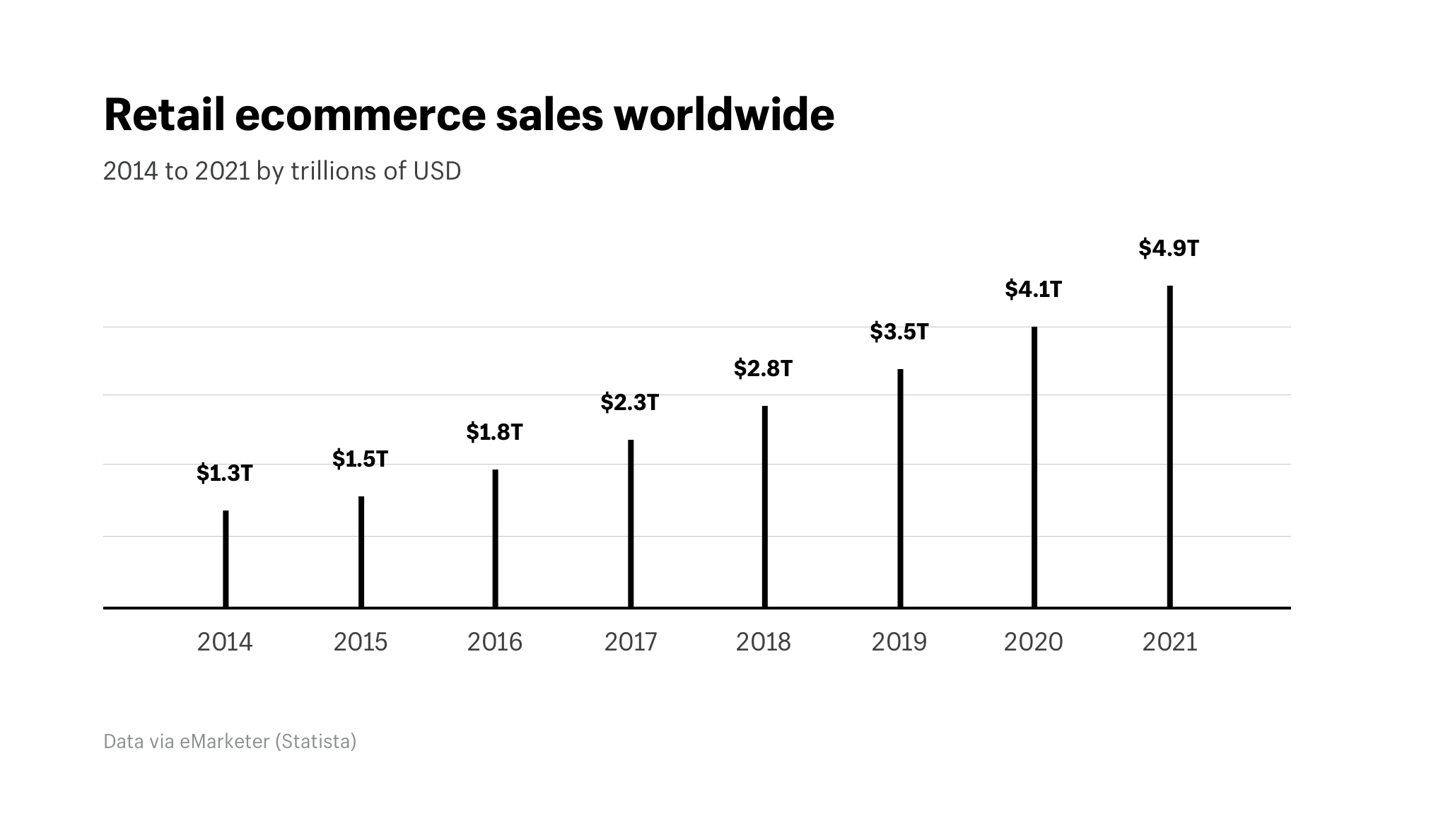
As digital channels are opening, international brands are finding more opportunities to meet consumer needs in a way that native countries just haven’t yet satisfied. A Nielsen survey showed that within the last six months of being surveyed, 57% of respondents had shopped from an overseas website. In some countries, the numbers were in the high seventies.
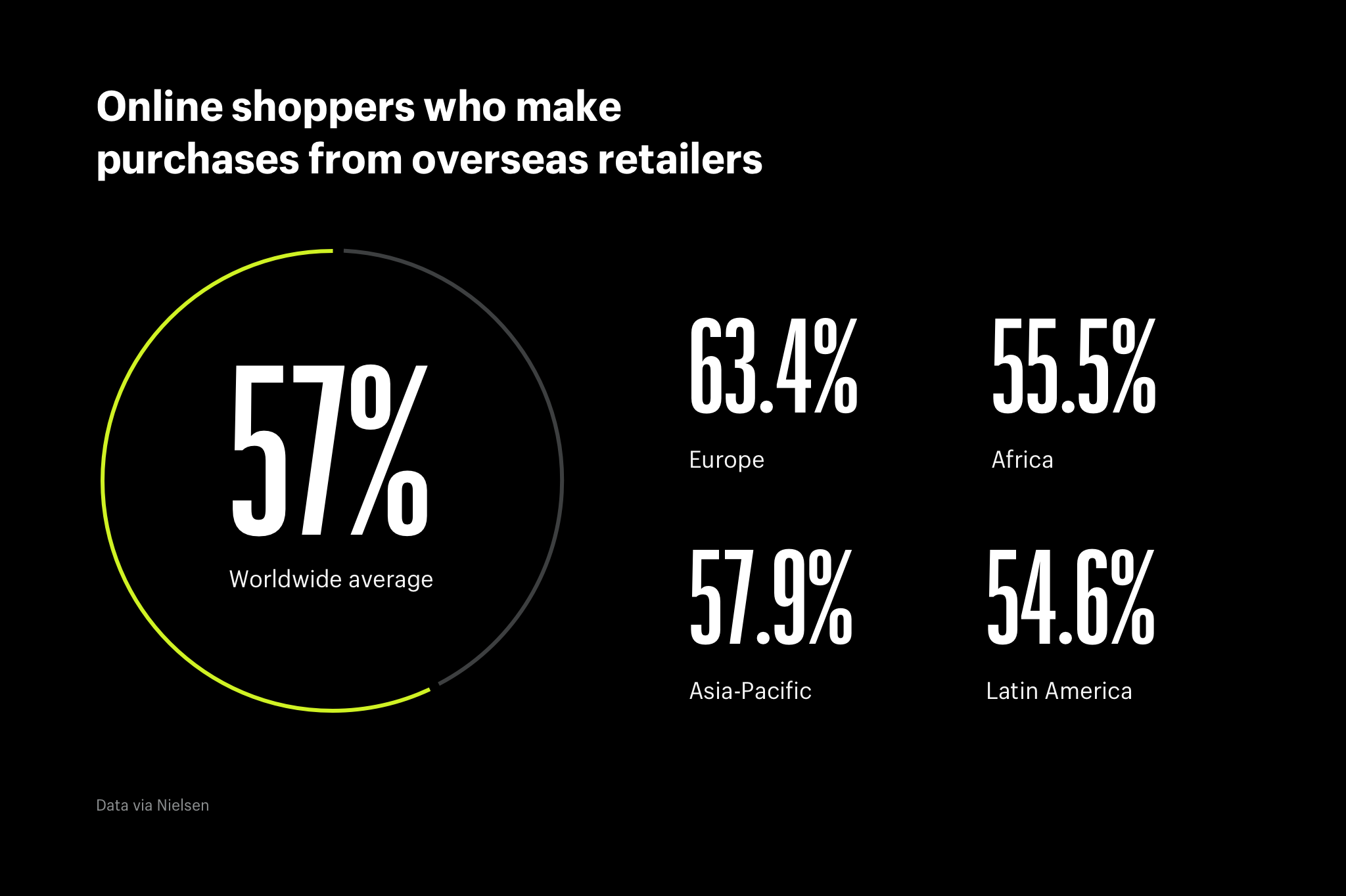
Why are consumers looking to international brands to suit their needs? One global ecommerce study asked participants why they shop outside their home countries: 68% said price, 46% said product or service availability, and 38% said selection.
In a border-free digital market, you’re bound to find what you’re looking for at a price you’re willing to pay.
Of course, there are a lot more factors at play than these three key motivators. For example, customers might be won over by a site with bonus shopping cart features, a site that’s been peer-reviewed for transparency and trustworthiness, or one that simply “fits” better with the local culture.
Strategize and Conquer: The Case for Emazing Lights
Global ecommerce can be a high-stakes game, so it’s not surprising that many business owners are intimidated into inaction.
Before going from zero to 60, there are some ways that you can test the waters and explore a strategy that suits your brand’s unique needs.
Shopify client Brian Lim of Emazing Group did just that for his sites Emazing Lights, iHeartRaves, and INTO THE AM. Before investing the resources into building an EU-specific site, he carefully examined the brands’ performances through their webstores and Amazon FBA.
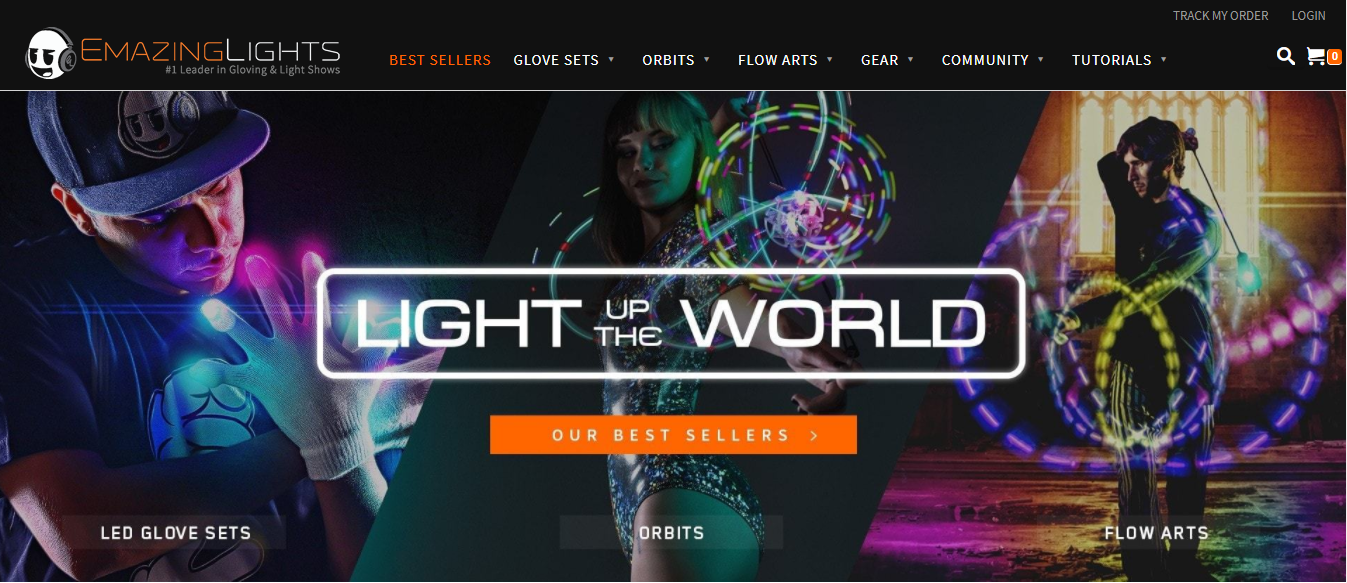
He drilled down into the data to find the EU areas where his sites were getting plenty of clicks but had low conversion rates. This info showed him where he had the most opportunity but hadn’t yet built the engagement needed to make the sales.
So Brian set forth with a project including language translation, faster shipping times via partnerships with new local vendors, and currency conversion optimization.
VAT turned out to be one of the biggest obstacles during the international expansion of his brand portfolio. While the EU has some overarching regulations, VAT laws vary by country – which can mean some serious hiccups for brands that aren’t prepared. To ensure that he’s on the right side of the law when selling to different countries, he’s chosen key partners to help him navigate VAT, or value-added taxes.
Brian also established strong manufacturer relationships to ensure quality products and support for returns and exchanges. For finances, he uses Chase payment processing, which doesn’t require a business entity or EU checking accounts.
With the new site launching in September, Brian and his team have taken the time to do their research and design an approach that maximizes their unique opportunities and streamlines their operations.
Let’s take a more in-depth look at some of the most impactful strategies used by Brian and other global ecommerce brands.
Key Considerations for Going Global
So, how can you ensure that your global rollout will go smoothly? Research, partnerships, and attention to detail.
The more time you put into your research, the more equipped you’ll be to fit into local markets. Nielsen does a good job of summing up the foundations for a strong global ecommerce plan:
- Local perceptions and trends
- Technology adoption and use
- Delivery infrastructure
- Currency and financial systems
- Customs and regulatory requirements
You’ll also need to be sure you’re meeting regional quality standards, setting prices reasonably with currency conversions and inflation in mind, ensuring your logistics systems are safe and efficient, and optimizing your after-sales service for a fair refund and/or exchange process. Sound overwhelming? It doesn’t have to be …
1. Speak Their Language – Literally and Figuratively
Expanding internationally or conducting an anthropology study? The two go hand-in-hand. For starters, research shows that 75% of shoppers won’t even bother with a site that isn’t in their language.
And I’m not just talking Google Translate. You don’t want to end up like KFC, when they learned the hard (and hilariously unfortunate) way that their iconic slogan “Finger-lickin’ good” directly translated to “Eat your fingers off” in Chinese.

Quality translations will take you far, whether it’s translating your current site or building new, localized versions complete with local SEO strategies. Translation goes for the entire process, so don’t stop at just the site. Include items like post-order emails, packing slips, and customer service initiatives.
If translation might be an issue, consider looking into markets with English as a second language. Stay on top of small variations in dialect and phrasing. For example, a “Did You Know?” section could potentially be considered condescending to a French shopper. Changing the phrasing to something like “Additional Information” could be a surprisingly impactful change.
For instance, ON (Optimum Nutrition) is a UK-based company selling sports nutrition products. The manufacturer sells its products in 70 countries worldwide. With a high quantity of supplements being introduced the company required quick localization to maximize the impact of its promotions.
Having analyzed the sales strategy and evaluated the options, the company decided to work with Capita TI to trial websites in German and French. ON’s selected localization team worked with Capita TI closely to choose translators that were placed on the project through an interview. This ensured that the chosen translators could understand the complexities of ON’s products, and do justice to branding.
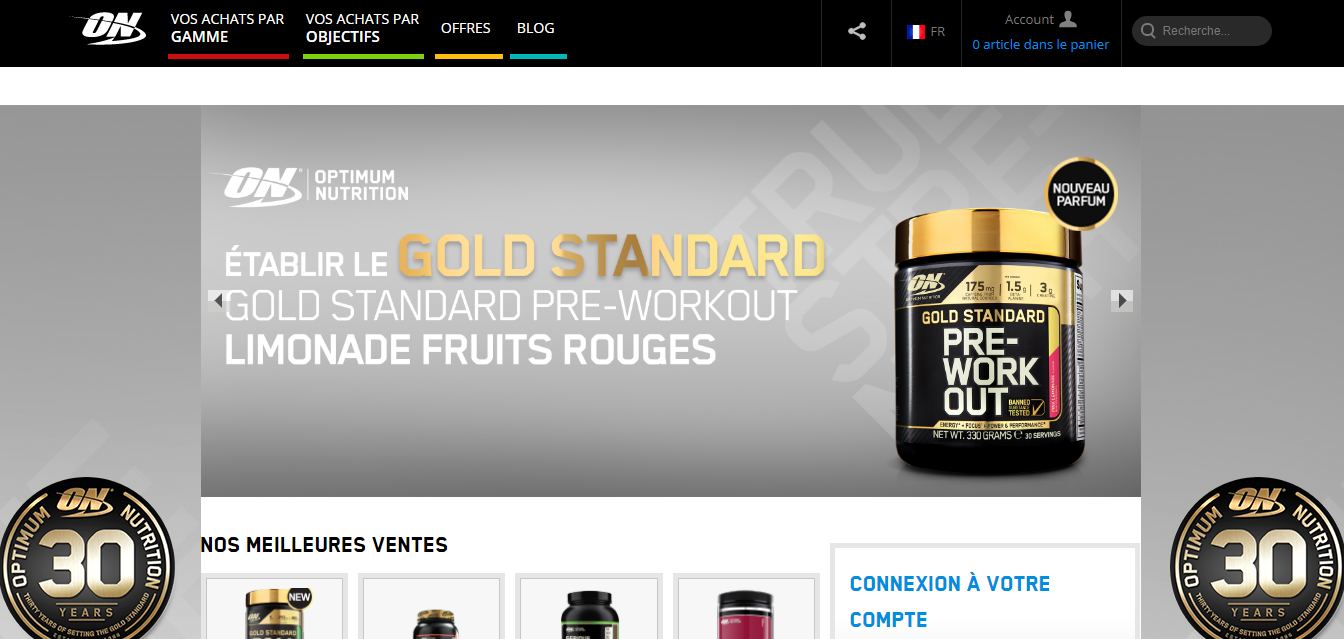
Having ON’s website presented in just two languages, the ecommerce sales for ON’s products doubled after the site’s traffic went up by 30%. The trial’s success led to other localization languages, enabling ON to expand into new markets, quicker.
Aside from the basics of language, understand your audience’s needs and behavior in the context of their culture and environment.
For example, McKinsey found that in China, most digital sales focus on just a few core categories: recreation, apparel, household products, and education. A Nielsen study found that South Korea’s biggest non-consumable purchases were for fashion-related products (77%); Japan’s were for books, music, and stationery (79%); and Brazil’s were for consumer electronics (57%).
Preferences matter in the case of global ecommerce, too. A UPS study showed that European shoppers were willing to wait an extra four days to receive their orders if the delay meant free shipping.
You know the basic principles of psychology and market research as they apply to your domestic ecommerce efforts. They’re just as important – if not slightly more – on the other side of the fence.
2. Mind Your Operations and Logistics
Brands face some sizable decisions when it comes to sending goods across borders efficiently and affordably, and making sure that customers are actually happy with the result.
Is it more efficient to ship from one centralized location, or to use local fulfillment providers in each region?
In the first case, it could be managing your own warehouse or partnering with a trusted third-party logistics (3PL) company that’s based in the U.S. In this scenario, the 3PL manages, picks, packs, and ships all of your stock without you needing to sweat the details. A 3PL may also have industry relationships to help you leverage shipping discounts, which can ultimately increase your profit margin. If you already partner with a 3PL for your domestic logistics, ask to see if they work internationally or have any extended service relationships.
But while shipping exclusively from the States can be a plus for convenience, it can translate to increased costs and transit time. Local shipping may be more upfront work in terms of building and maintaining reliable relationships, but it might pay off for the tradeoff. Ultimately, this was the decision that Brian at Emazing Lights came to.
One of the key benefits of a local 3PL provider is speedy delivery like “next day” options, which can translate to significantly happier customers and an overall greater ability to compete with local brands in the marketplace.
Case in point: Encouraged by the prospect of selling luxury cuff-links in the Far East, Thamesbury gained market share quickly in numerous Asian nations by executing a simplistic yet highly effective cross border ecommerce strategy. To sell in Taiwan, for instance, the company introduced a localized website, which turned out to be a great move as there are fewer cufflink merchants with Chinese-language websites.
Handling orders across the markets, however, turned out to be challenging due to fluctuating sales. The packer used to struggle during peak times, and the company were overpaying during quieter phases. In order to get a better grip on order fulfilment, the global ecommerce merchant partnered with ezyCommerce – SingPost Group’s cloud-based, multi-channel order fulfillment solution.
ezyCommerce’s automated fulfillment technology, which can be integrated with channels like Rakuten, Amazon and Ebay sped up the processing of international and local orders. The solution also enabled Thamesbury to minimize the risk of human error and store its inventory in the fulfillment partner’s warehouse, as well as be efficient at stock management.
As a result of this partnership, Thamesbury’s shipping speeds saw a 20% increase.
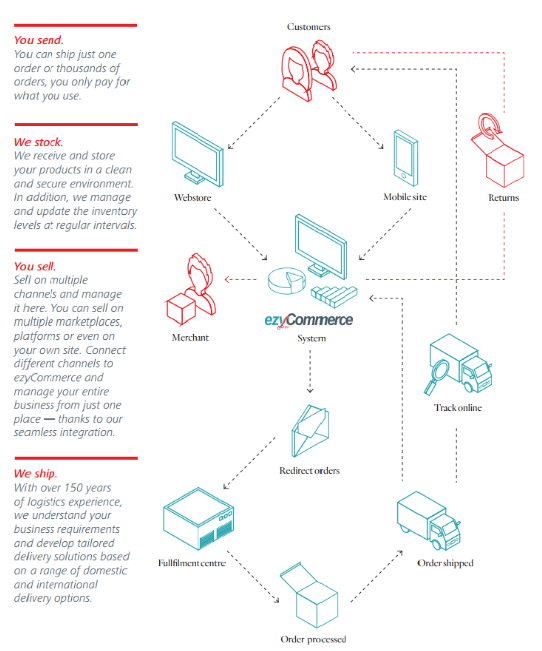
Within a year, the firm grew from being a startup to becoming a global brand that deals in high-quality and unique cuff-links. Because its fulfillment partner harbors a strong presence across Asia, Thamesbury has also eyed the burgeoning markets of South Korea, Australia, China, and Japan.
There are also options for third-party partners with pre-built networks and resources, like the FedEx Cross Border program. UPS offers free services under its TradeAbility International Tools, which help with considerations like estimated landing cost, screening for denied parties, finding harmonized codes, checking import compliance, and detecting export licenses. These considerations are all fuel for your logistical and operational strategy.
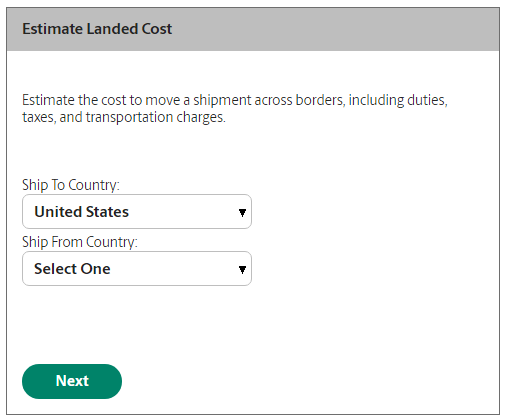
3. Your Payment System Is More Important Than You Might Think
Even in your own stomping ground, you know the pain of a cart that’s abandoned just short of the transaction. For global ecommerce, adapting to local payment preferences can be a proverbial make-or-break. It’s estimated that 59% of consumers won’t make a purchase if their preferred payment option isn’t provided.
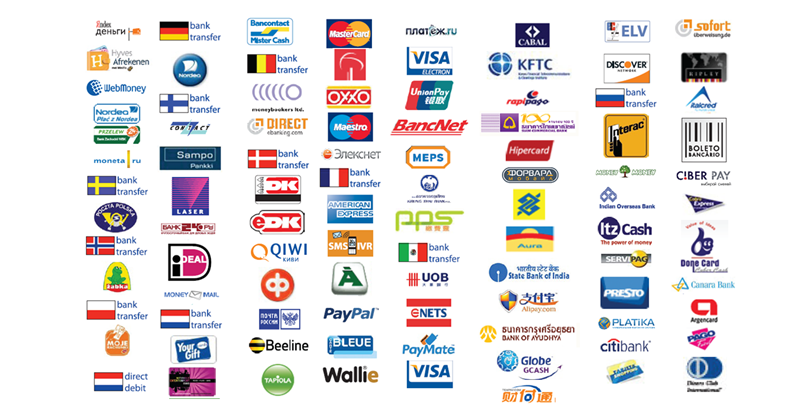
According to Nielsen, 53% of international ecommerce shoppers said they paid with a credit card within the last six months. Next was 43% who used a digital payment system like PayPal or Alipay, then 39% reported using a debit card, and 38% used direct debit from a bank account.
However, key regions like China and much of Western Europe are partial to digital payment systems. For example, 86% of Chinese respondents used this method (which is primarily a system called Alipay), as well as 68% of respondents in Germany, 56% in Spain, and 55% in Italy.
In Japan, Konbini, which means “convenience store” in Japanese, is second to credit and debit cards. Consumers purchase products online, and pay cash when they pick them up over-the-counter from a convenience store. Cash-on-delivery is popular in several developing markets:
- Nigeria: 76%
- The Philippines: 73%
- Russia: 70%
- United Arab Emirates: 68%
- Saudi Arabia: 59%
- Colombia: 57%
- Poland: 57%
- Thailand: 56%
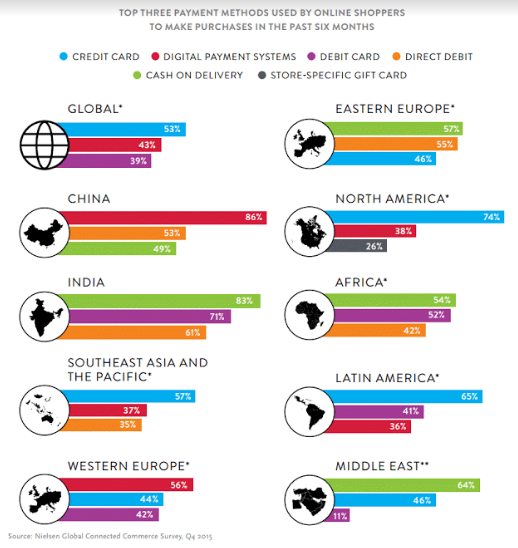
Shopify allows its merchants to list cash-on-delivery as a payment option on their store’s checkout page.
Realizing the importance of local payment options, HobbyKing — one of the globe’s leading ecommerce hobby shops, partnered with WorldPay — a global leader in payments processing technology - to give more payment options to its customers and improve its global sales success.
The merchant has experienced a 12% leap in payment acceptance since the partnership started functioning in February this year. Its payment partner has allowed HobbyKing to streamline debit and credit card acceptance, and offer additional payment options. There are plans to support both Boleto and AliPay in the future.
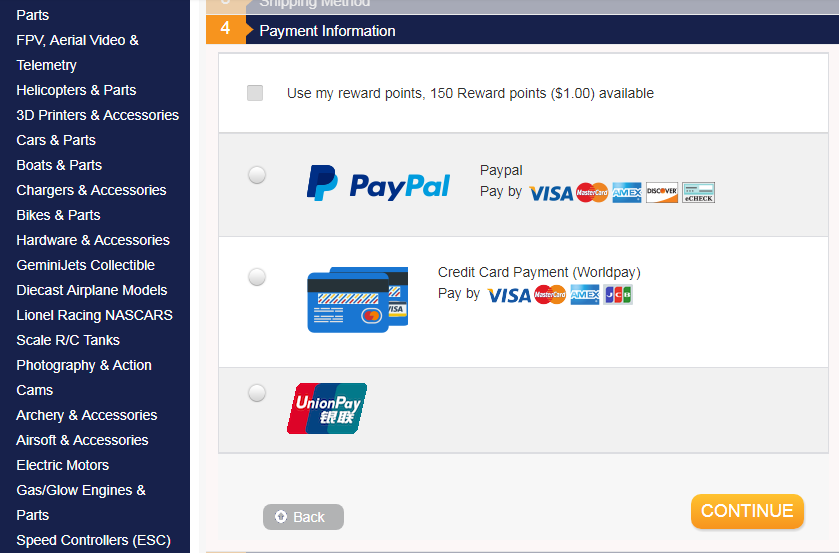
The move will enable HobbyKing to cater a broader range of consumers from across the globe by providing them with the option to not only pay using their preferred method but also using their local currency.
Play Your Hand in the Global Ecommerce Market
The stats don’t lie: now is the time to make your business border-free. With a number of tools and resources at your disposal, you won’t need to play the “trial-and-error” game that was the fate of our ecommerce forefathers.
When you develop the right strategy and tap into the wealth of support resources available, your brand can penetrate and dominate international markets as your empire continues to grow.
So go ahead and add “global ecommerce failure” to the list of irrational fears, right under “zombie apocalypse.”


